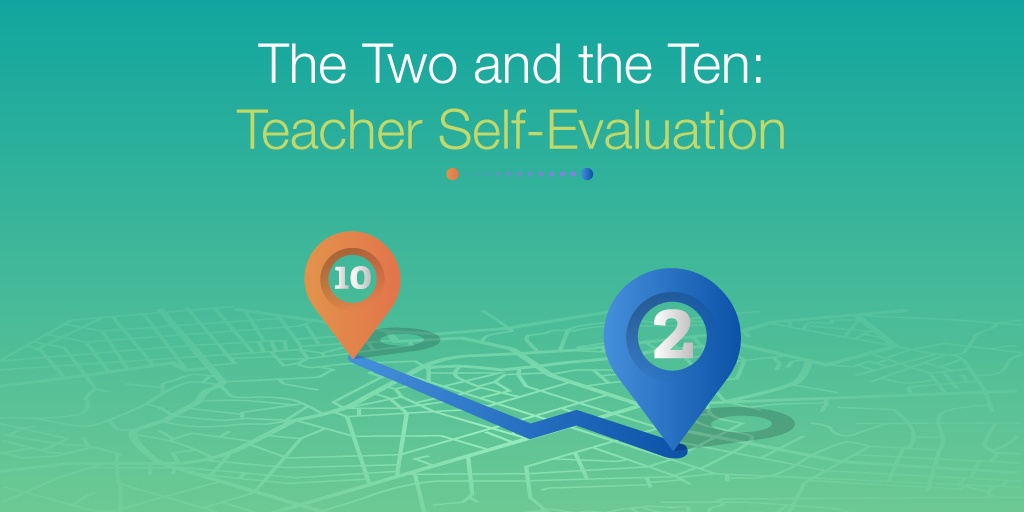
For most adults, it is difficult to be objective when assessing ourselves. Classroom teachers are not an exception. From my experience, it isn’t from a lack of trying. Most teachers try to improve and reflect, but it can be a challenge. It’s difficult because teaching is a very personal thing. We teach from our heart and from our personality, so it can be hard to critique something that is so “close” to us—so near and dear to who we are and what we believe.
I recently had the opportunity to have this experience myself. I have started teaching some undergraduate-level workshop classes at a local university. I discovered something pretty profound: I learned as much from my students as I attempted to teach them. Great teachers have shared this same reflection with me over the years (and I am a long way away being from a great teacher), but I found it to be very true.
Gaining Perspective
I love working with teachers and great professionals because there is a vastness of experience that comes with being a teacher. Each one of my students taught me something different, and one of the teachers in particular stood out. She teaches art and had a passion for helping kids improve in their art and, on a personal level, this teacher introduced me to a concept that she called “the two and the ten.” I have little experience with art, but what I learned from this teacher is that the same concept can be applied to our instructional practices to help us reflect and evaluate our own teaching.
Here is how “the two and the ten” works in her classroom: After a student finishes a piece of art, they look at it from two feet away, and then they back up and look at it again from ten feet. This simple strategy, she said, works extremely well to get students to see their art as others would see it. When we are “close” to things—both figuratively and literally—we see them in a different light.
What is instruction like when we back up a little bit? What does it look like even further back? How can we facilitate this practice for our teachers, and what does that even look like?
Taking a Step Back
Let’s start with the concept of “the two,” or looking at something with just a little distance. In art, why would an artist look at their work from this distance? It is because many of the smaller details blend together to give the intended picture. The question to ask when looking at it from a short distance is, “Does this look the way I would like it to look?”
In the classroom, ”Is this the way I would like for this _________ to look?” is a question we should be asking all the time. Fill in the blank with any word: instruction, discipline plan, assessment, procedure, technology lesson, cooperative learning strategy, etc. It’s very easy as a teacher to get lost in the daily “weeds” of the classroom and not step back to see if things are working the way they would like for them to.
In my opinion, looking at a “two” for a teacher should happen at least weekly. It may not be possible for every subject area or every part of the classroom. If this isn’t a regular practice already, I would encourage teachers to take one section of the class for the week and focus on it for the week “at a two.” Look more closely at something like math centers, homework, morning work, or classroom transitions. When we step back a little bit and ask ourselves, “Is this working the way I would like for it to work?” we start to see the picture a bit clearer about how we view our teaching practices.
Turn It Up to Ten
Looking at our work from a “ten” is an even greater perspective. The question asked in the art classroom from this distance is, “How will others view my work from this vantage point?” This can be a deep one to consider as a teacher because it is so multifaceted. The “others” in a classroom could be the students, other teaching professionals, or parents.
It is possible to ask these people about their perspective, just as it is possible to ask others to critique our art. This isn’t an efficient process though, and in order to improve, we must be able to see for ourselves what our teaching looks like from a “ten.” For example, to really put ourselves into the seat of a parent, we must empathize with all the different types of parents we have in our classrooms. To me, this isn’t extremely challenging, but it something that we too often fail to do. When we assign homework, do we look from a “ten” at how the parents, students, and other teachers will see the assignment? Maybe it doesn’t change anything with the assignment itself, but these considerations can help us to improve our classroom and student learning.
This interesting take on student art critiquing has caused me to start looking at many things in our school “from a two and from a ten.” Hopefully, by stepping back from the details and routines of the classroom, teachers can improve their practice and outcomes for their students.
Looking for more great teaching tips? Be sure to subscribe to the Educator blog today!



